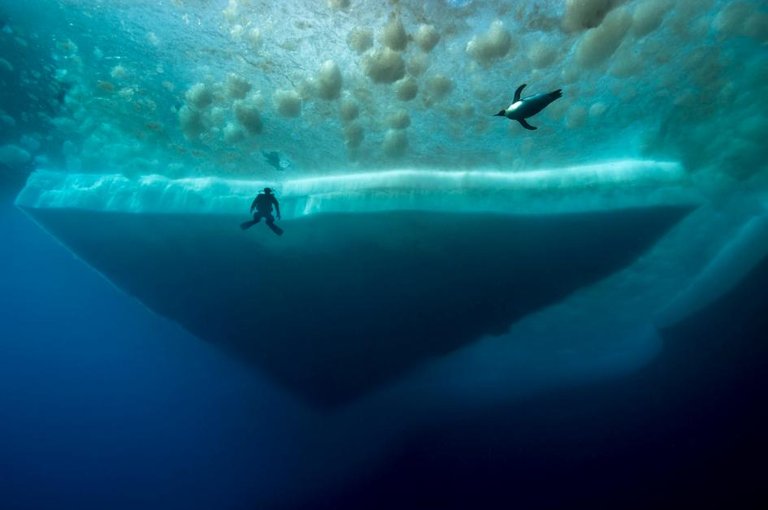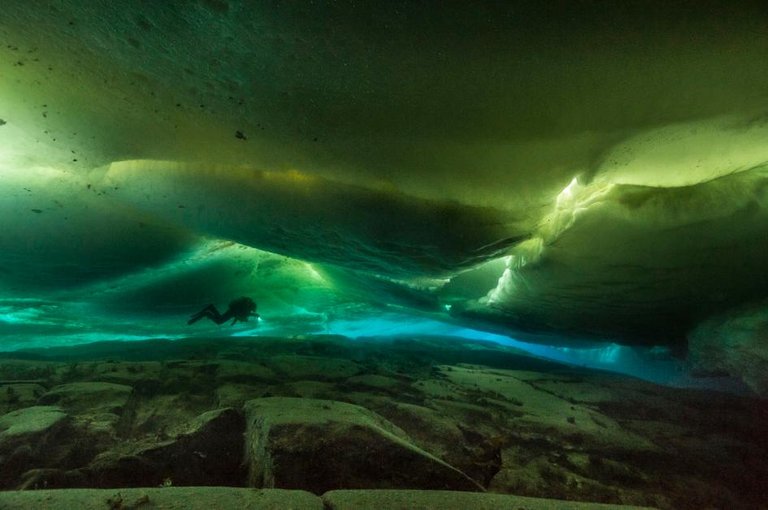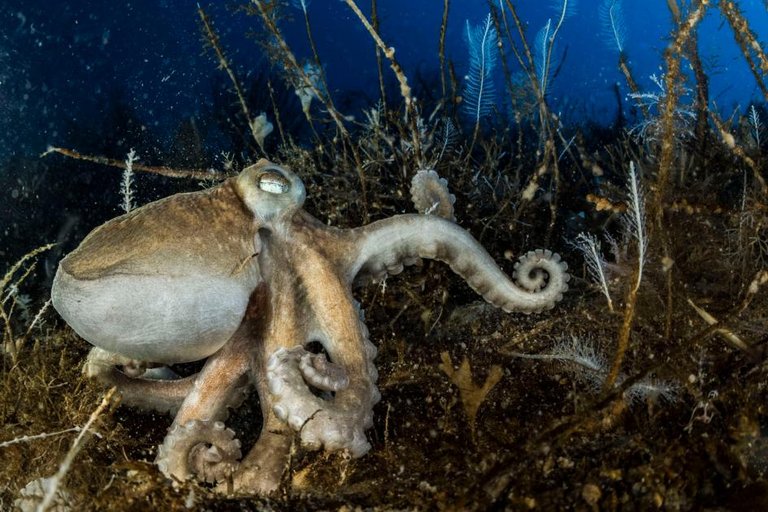In an expedition unlike any other, National Geographic photographer Laurent Ballesta took a cold, harsh plunge below the sea ice in the deepest dive ever under Antarctica.
The process for this journey wasn’t a simple one, however; the trip took two years to prepare.
Once in Antarctica, getting into the diving suits took an hour alone, and once equipment was secured, divers carried up to 200 pounds below the ice. The weight makes swimming almost impossible, Ballesta says, but without dry suits, divers would die in as little as 10 minutes.
The five-hour dives into the sub-29 degrees Fahrenheit water—salt water remains liquid below freshwater’s freezing point of 32 degrees—are excruciatingly painful.
But what Ballesta captured on the ocean floor, he compared to “a luxuriant garden.”
“The waters under Antarctic ice are like Mount Everest: magical, but so hostile that you have to be sure of your desire before you go,” he said.
Pictures courtesy: National geographic

A diver swims beneath several feet of Antarctic ice. The rope hanging nearby helps divers find their way back to the surface.

A seal swims beneath sea ice near East Antarctica’s Dumont d’Urville Station .

A young Weddell seal sits in an ice gap. The juvenile will be about 10 feet long and weigh half a ton once its fully grown.

A diver watches an emperor penguin as it swims nearby. The brown patches above are microalgae, which cling to sea ice and photosynthesize in the spring .

For nearly five hours at a time, divers documented plant and animal life up to 230 feet below the surface.

One of Antarctica’s 16 species of octopus sits on the bottom. All Antarctic octopuses have a specialized pigment in their blood, turning it blue, to help them survive subfreezing temperatures.

The most southerly breeding mammal in the world, a Weddell seal, swims beneath the ice. The seals stay near the coast, breathing air through holes in the ice.

A diver swims more than 200 feet below the surface, where the light is dim and temperatures drop below 29 degrees Fahrenheit.
source: NAT GEO
Hi! I am a robot. I just upvoted you! I found similar content that readers might be interested in:
http://www.nationalgeographic.com.au/nature/pictures-mysterious-deep-sea-life-below-antarctica.aspx
Congratulations @rikivip! You received a personal award!
You can view your badges on your Steem Board and compare to others on the Steem Ranking
Vote for @Steemitboard as a witness to get one more award and increased upvotes!